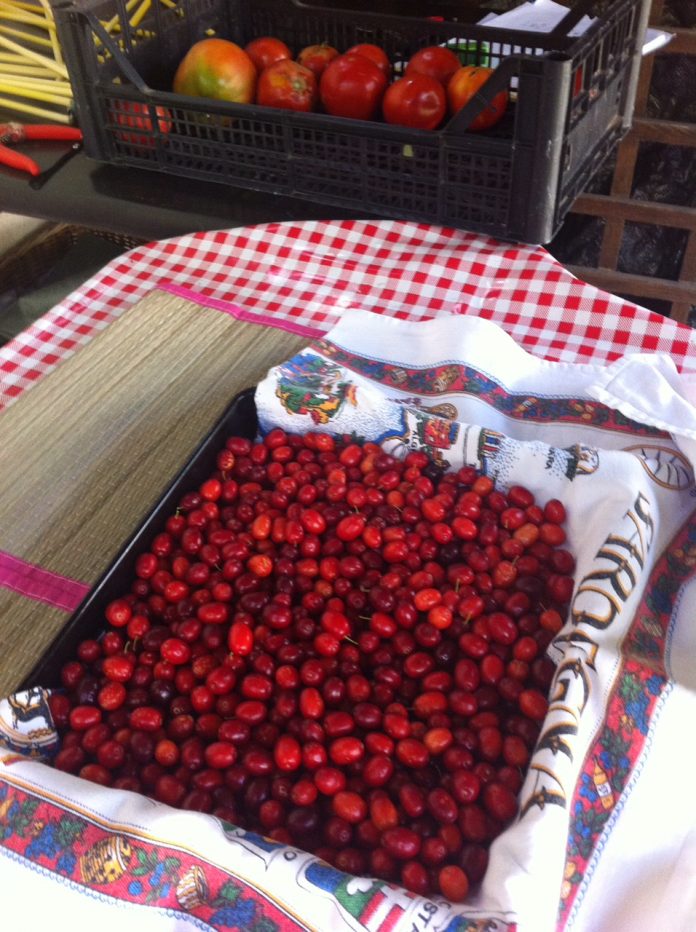by Alessandra Ressa
One of the best preserved secrets of our Karst is undoubtedly the Cornelian cherry (corniole in Italian).
This ancient gift of the woods is an edible wild berry with great healing properties that grows abundantly on trees in the Karst hills around Trieste. It only takes a walk along the trails between Padriciano and Basovizza to see dozens of Cornelian cherry trees with their tiny red fruit (the size of Taggiasche olives).
Unfortunately, this historically important fruit has lost its flavor in the post-industrialized era because it’s not easy to mass-produce. The fruit has also got a pit that is difficult to remove. With a little manipulation, however, it can add an original twist to your cuisine, and it is a great alternative for cranberry sauce.
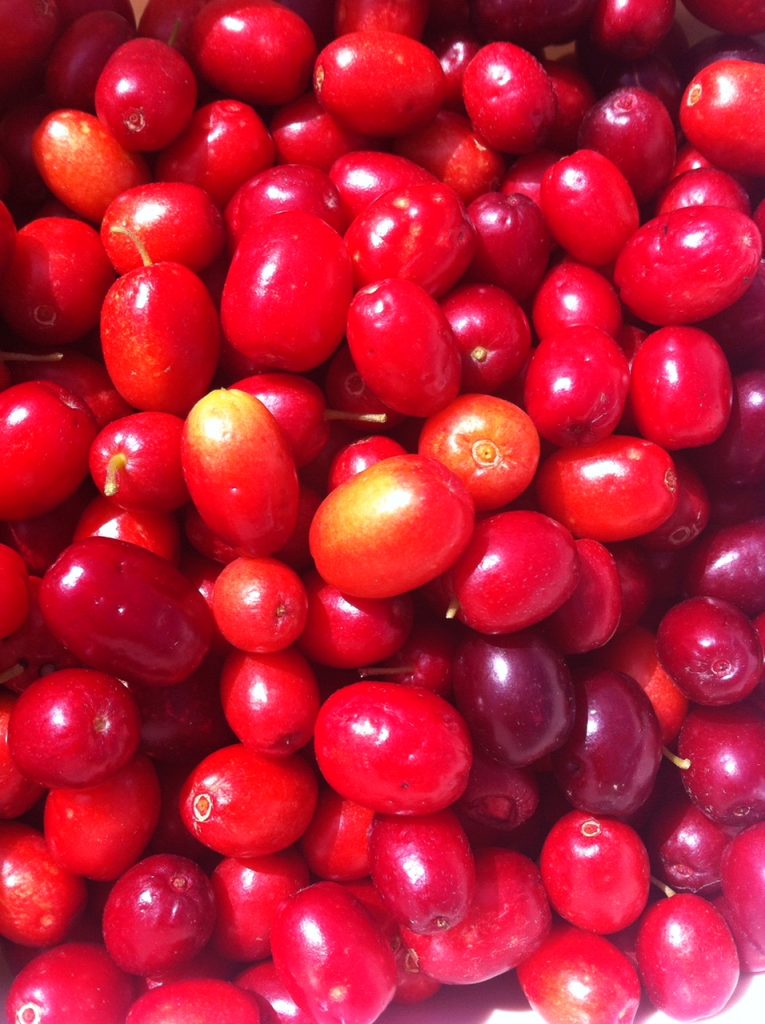
In Trieste, Cornelian cherry trees are the first to bloom in spring and the last to bear fruit in summer. The berries usually reach the perfect point of ripeness at the beginning of September, when the fruit turns dark red (but not soft). So get your basket ready and rest assured you’ll probably be one of the very few appreciators.
Incredibly enough, Triestini aren’t really interested in this wild berry which their grandmothers used to call stropacul. In the local dialect it is a colorful if a bit vulgar way to underline their healing properties in curing diarrhea.
In addition, this berry is not a distant relative of the classic cherry. And even when ripe, it retains a sour taste and a texture which causes “cotton mouth”.

Like many wild fruits in Southern Europe, Cornelian cherries were very popular in the older times, particularly in ancient Rome and Greece. The Latin name “Cornus mas” tells us about their mystical background, the word “cornu” meaning horn in probable reference to the strength and density of the wood. The plant is in fact extremely resistant and can live up to 200 years.
The Latin word “mas” means male, and it is probably related to the absence of fruit that sometimes occurs for several years after new plants begin to bloom. The common name “cornelian cherry”, on the other hand, comes from the cherry-like fruits which resemble in color the semi-precious carnelian (or cornelian) gemstone.
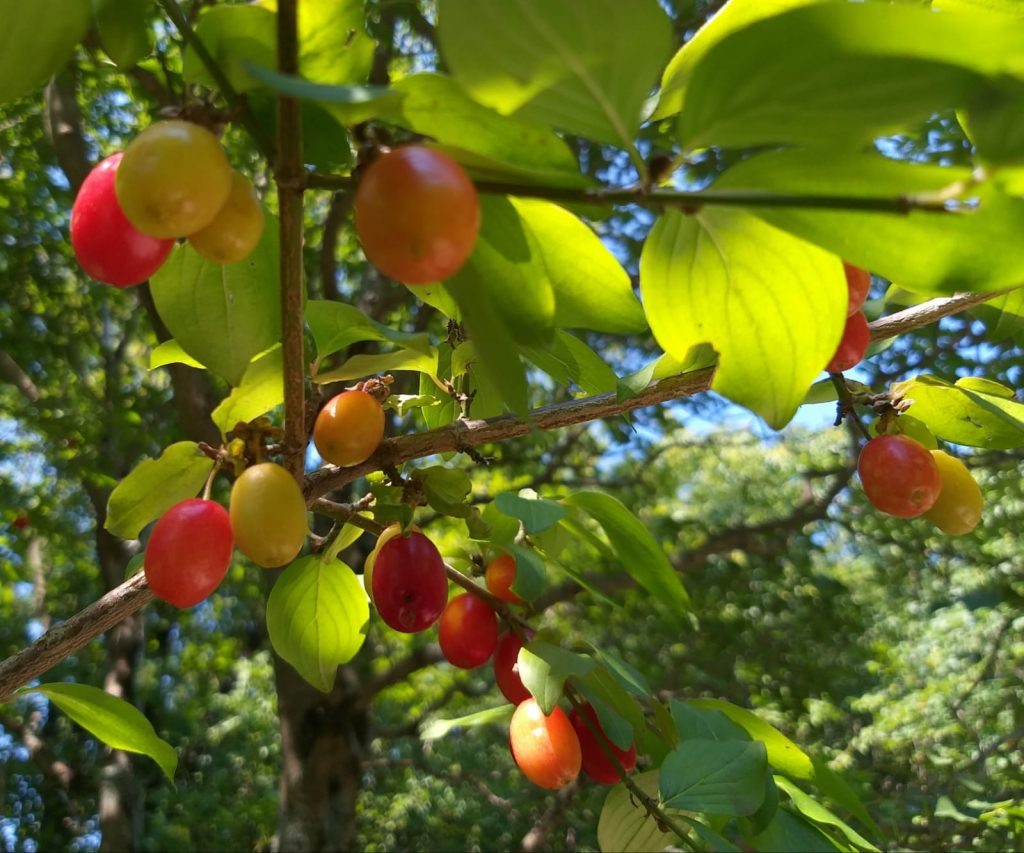
In ancient Greece the cherries were adored both by people and medical practitioners including Hippocrates. Ancient Romans used them to produce a sauce (not too different from cranberry sauce) to accompany red meats. They also made special syrups, used as sorbets to better digest meals.
Speaking of the Golden Age in his book Metamorphoses, the Roman poet Ovid wrote:
“And Earth, untroubled, unharmed by hoe or ploughshare, brought forth all those men had a need for, and those men were happy gathering berries from the mountainsides, cornel cherries, or blackcaps, and edible acorns”.
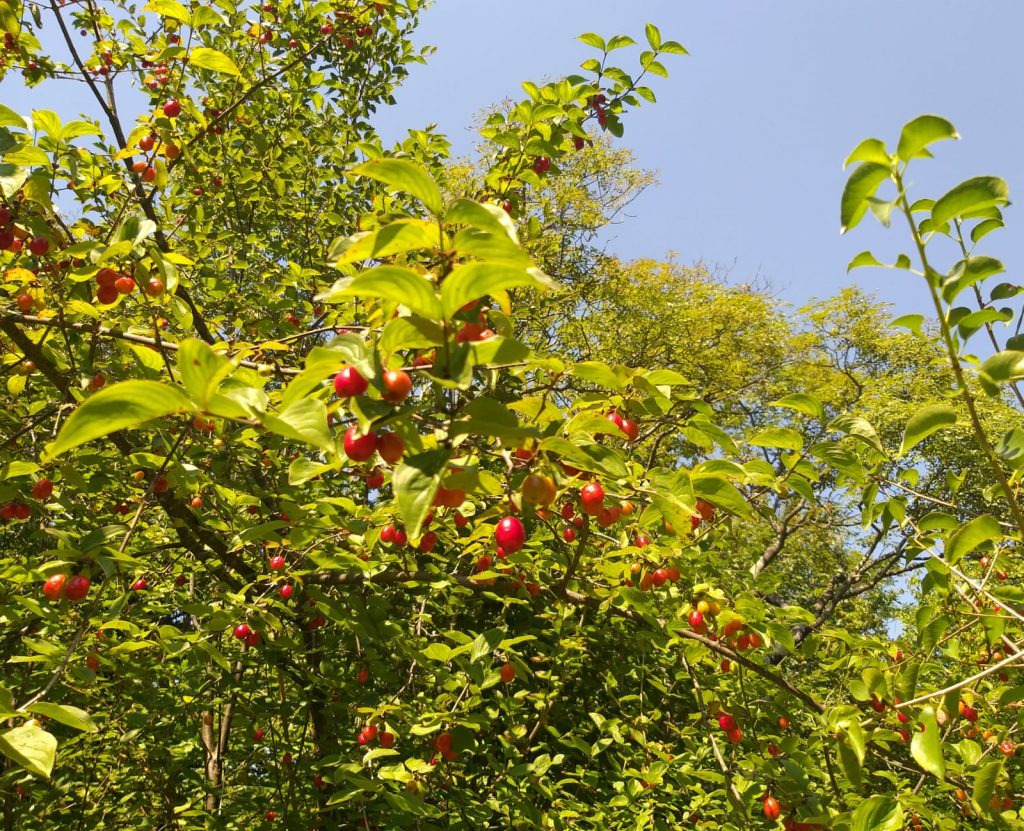
The consumption of Cornelian cherries is slowly becoming popular again as they contain several substanced considered greatly beneficial for our health. According to scientists, these berries are rich in anthocyanin which has antioxidant and anti-inflammatory properties.
Cornelian cherries also contain organic acids. They are a rich source of Vitamin C, and depending on genotype or origin, can contain up to twice the amount of orange. Due to the resilience of the wood itself, people used the bark, leaves, flowers and roots of this tree to prepare various remedies. Unripe berries, as well as ripe ones, are used in treating various intestinal problems such as diarrhoea or fever conditions caused by digestive problems.
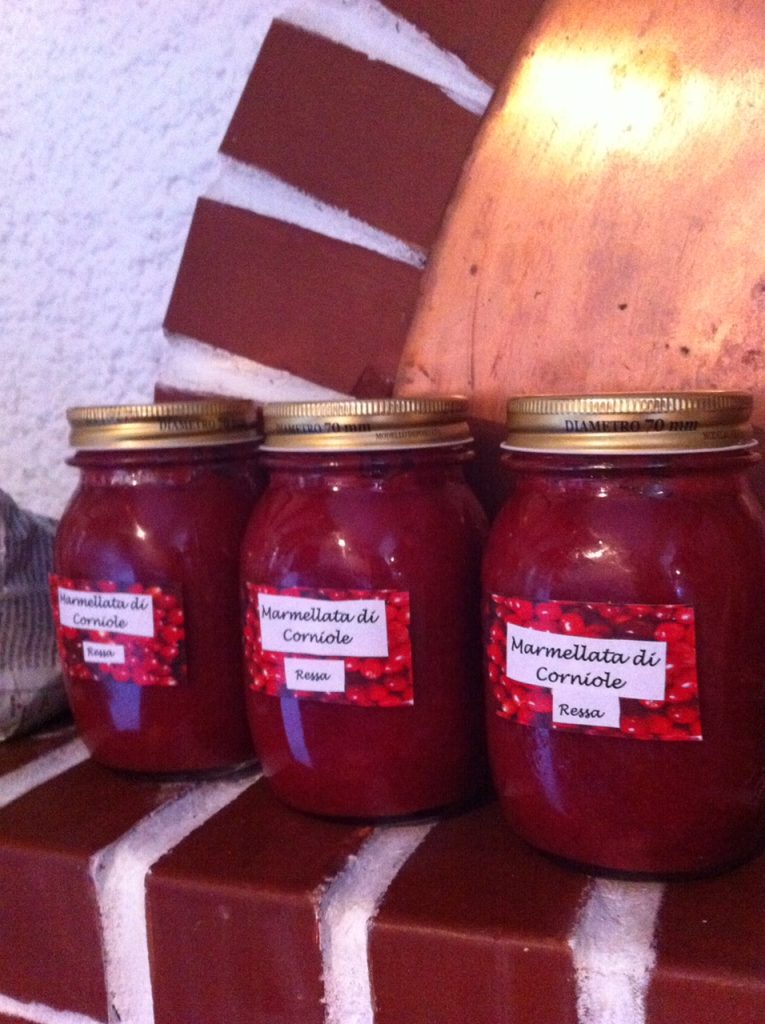
There are hundreds of ways to use Cornelian cherries in the kitchen. Although it is time consuming to cook them and remove the pit, you will end up with something healthy, delicious and surely different to impress your friends.
Jam is a classic: just cook the fruit in brown sugar (and a little water) with a sprinkle of grated organic lemon peel and a grain of natural vanilla, mash or blend to obtain a creamy texture, and you’ll have a wonderful, rich jam to use on your toast or in the old-style custards and pies. As these ancient fruits are not very juicy, you may want to add a couple of red plums to the cherries to give the jam a creamier consistency.

A similar process, but using much less sugar, no lemon no plums and no vanilla, can be followed to obtain a great substitute for cranberry sauce, which, if you live in Italy, you surely know is almost impossible to make due to the lack of fresh ingredients.
If you like the very sour taste you can consume the ripe fruits raw, or sun-dry them on your balcony protected by a net. You can also preserve them in a brine and use them as olives. They make excellent appetizers and are a delicious and original match for a Prosecco aperitivo.
Finally, you can keep the cherries in 96% ethyl alcohol from 2 to 4 weeks and make some great tasting home made grappa, or add sugar and water to the distilled mixture of alcohol and cherries and have a thick, bright colored, unique tasting liquor that you can drink cold or add to lemon sorbets like the ancient Romans did. And finally, the leaves can be dried and make a great substitute for tea.

























